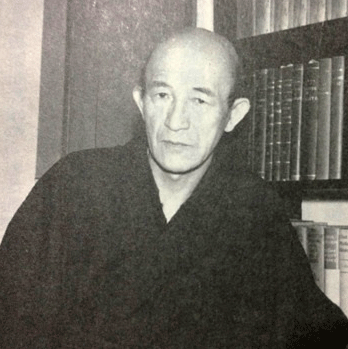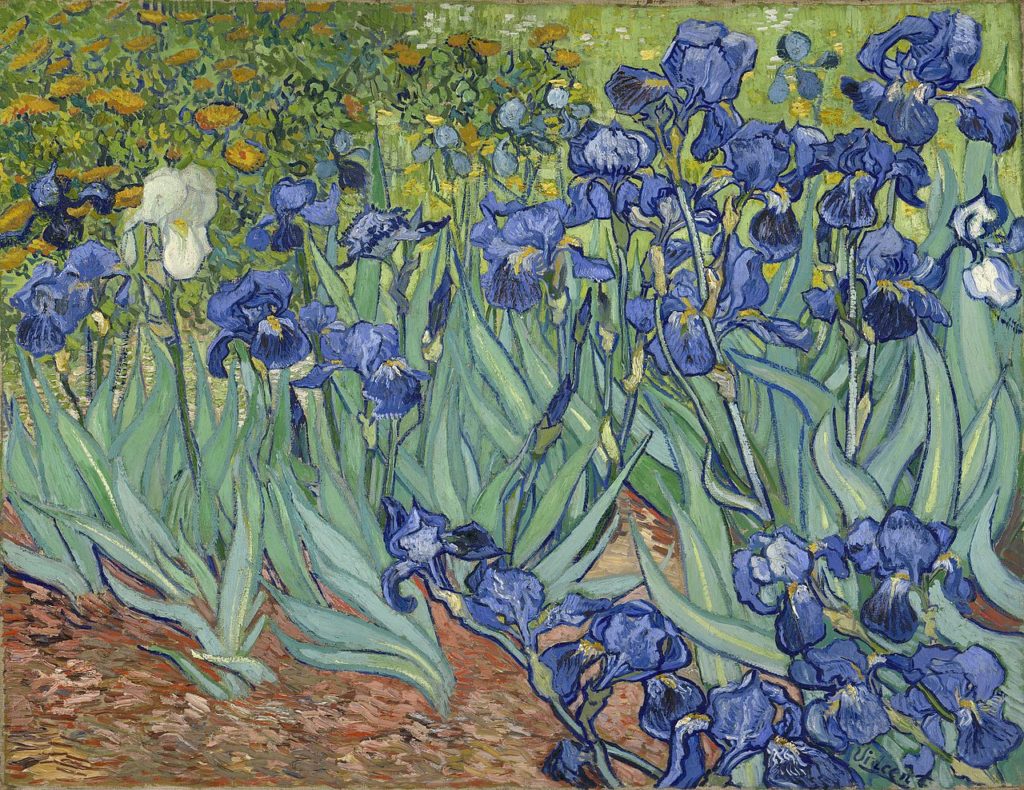It is not uncommon in the West to hear that Buddhism is not a religion. On one hand, it does not postulate a creator God separate from his creation, on the other it does not insist on belief in a dogma. Yet, when in the 1950s, Zen philosopher Nishitani Keiji was asked to define religion in an essay, he felt so inspired that he wrote six essays which were published in 1961 under the title Shūkyō to wa nanika, meaning “What is Religion?” Using his own experience of Zen Buddhism as well as extensive readings on Christianity, he undertook an exploration of the concept of religion, that which can be found at the heart of all religions, however different their dogma and practices appeared to be.

As he embarked on this task, Nishitani was following in the footsteps of Nishida Kitaro, also a Zen philosopher and the founder of the Kyoto School of Philosophy, who had described his own philosophy as the “religious worldview“ in “The Logic of the Place of Nothingness and the Religious Worldview.”
In his essays, Nishitani suggests a number of common definitions found in Western writings “the relationship of man to an absolute, like God,” an “idea of the Holy,” “the abandonment of self-will in order to live according to the will of God,” or “the intuition of the infinite in the finite.” Though he admits that all these definitions are valid, and could be argued for, Nishitani dismissed them as unsatisfactory because they are the products of an investigation of religion as an object viewed from the outside and, in his view, fail to grasp what religion is as such.
Religion as religious quest and a radical conversion of mind
Nishitani notes that “religion is at all times the individual affair of each individual,” and we cannot therefore “understand what religion is from the outside. The religious quest alone is the key to understanding it … This is the most important point to be made regarding the essence of religion.”
Nishitani continues “from the standpoint of the essence of religion, it is a mistake to ask “What is the purpose of religion for us? And one that clearly betrays an attitude of trying to understand religion apart from the religious quest. It is a question that must be broken through by another question coming from within the person who asks it. The counterquestion that achieves this breakthrough is one that asks, “For what purpose do I myself exist?” Of everything else we can ask its purpose for us, but not of religion.”
Here is, reformulated from an existentialist stance, Nishida’s “overturning” and “radical conversion of mind” achieved through “the effort of self-negation” which he had seen as underlying the religious worldview. Because this existential approach to religion as religious quest is so different from what a Western public expects from a book called “What is Religion?” the English translation of Nishitani’s collection of essays was published as Religion and Nothingness. This was also the case for its Spanish translation, while the German translation retained the original title for Was ist Religion?
Nishitani’s own religious quest was shaped by his experience of nihilism
Born in 1900, just decades after the beginning of the Meiji Era during which Japan turned from a feudal country closed to the world into a modern industrialised nation, Nishitani can be said to have lived through one of Japan’s most turbulent periods in history, with two world wars and a final defeat which led to its occupation by the US. In addition, according to James W. Heisig, in Philosophers of Nothingness, Nishitani had a painful childhood, having lost his father when he was fourteen, and spent many years out of school due to tuberculosis, the disease that had killed his father. “My life as a young man can be described in a single phrase: it was a period absolutely without hope … My life at the time lay entirely in the grips of nihility and despair … My decision, then, to study philosophy was in fact – melodramatic as it might sound – a matter of life and death” (quoted by Heisig). At the time he wrote Religion and Nothingness, Nishitani had been suspended from his post at the University of Kyoto by the American forces occupying the country. Confined to his home, he had once again gone through moments of despair over the human condition.
The overwhelming sense of meaninglessness which had so often haunted his every move helped Nishitani become aware that he had assumed that there existed an inherent meaning of the world. And this holds true for all of us, even more so today, when the human species itself is threatened by environmental disasters of its own making. When faced with meaninglessness, we “become a question to ourselves.” Although Nietzsche, whom Nishitani had carefully studied, invites us to create new meaning, or new values, we struggle because we are not ready yet. As Nishitani’s quest reconnected with his Rinzai Zen training, he realized that, instead of struggling to ward off his feelings of despair, his experience of nihility paralleled, and therefore could be amplified by the Buddhist practice of the Great Doubt, which Hakuin had revived in the eighteenth century. This practice aims at turning the practitioner into a “great ball of doubt.” This is how Takusui, one of Hakuin’s disciples, described the procedure of the Great Doubt:
“The method to be practiced is as follows: you are to doubt regarding the subject in you that hears all sounds. All sounds are heard at a given moment because there is certainly a subject in you that hears … You must doubt deeply, again and again, asking yourself what the subject of hearing could be. Pay no attention to the various illusory thoughts that may occur to you. Only doubt more and more deeply, gathering together in yourself all the strength that is in you, without aiming at anything or expecting anything in advance, without intending to be enlightened and without even intending not to intend to be enlightened … [As] you go on doubting, you will find it impossible to locate the subject that hears. Doubt deeply in a state of singlemindedness … becoming completely like a dead man, unaware even of the presence of your own person … You will arrive at a state of being completely self-oblivious and empty. But even then you must bring up the Great Doubt, “What is the subject that hears?” … And after that, when you are no longer aware of your being completely like a dead man, and are no more conscious of the procedure of the Great Doubt but become yourself, through and through, a great mass of doubt, there will come a moment, all of a sudden, at which you emerge into a transcendence called the Great Enlightenment, as it you had awoken from a great dream, or as if, having been completely dead, you had suddenly revived” (quoted by Nishitani).

“[The] fundamental conversion in life is occasioned by the opening up of the horizon of nihility at the ground of life”
In Nishitani’s experience, it is the encounter with nihilism itself that had triggered the religious quest. He writes: “We become aware of religion as a need, as a must for life, only at the level of life at which everything else loses its necessity and its utility … When we come to doubt the meaning of our existence in this way, when we have become a question to ourselves, the religious quest awakens within us.” But, Nishitani adds, this is true for all of us as “that abyss is always just underfoot.” It is just that we do not normally see it. Death is not “something that awaits us in some distant future, but something that we bring into the world with us at the moment we are born.”
In his distinctive style, Nishitani narrates his experience of nihility, and how it led him to the conversion from the self-centred mode of being to “an attitude that asks for what purpose we ourselves exist” that defines the religious standpoint.
“Normally we proceed through life, on and on, with our eye fixed on something or other, always caught up with something within or without ourselves … These engagements block off the way to an opening up of that horizon on which nihility appears and self-being becomes a question. But when this horizon does open up at the bottom of those engagements … something seems to halt and linger before us. This something is the meaningless that lies in wait at the bottom of those very engagements that bring meaning to life. This is the point at which that sense of nihility, that sense that “everything is the same” we find in Nietzsche and Dostoevski, brings the restless, forward-advancing pace of life to a halt and makes it take a step back. In the Zen phrase, it “turns the light to what is directly underfoot.” … Taking a step back to shed light on what is underfoot of the self … marks a conversion in life itself. This fundamental conversion in life is occasioned by the opening up of the horizon of nihility at the ground of life. It is nothing less than a conversion from the self-centred … mode of being, which always asks what use things have for us …, to an attitude that asks for what purpose we ourselves … exist. Only when we stand at this turning point does the question “What is religion?” really become our own.”
Nishida had also said: “There must be an overturning, a radical conversion of mind, in any religion. Without it there is no religion.”
For most people, the mode of thinking and knowing that we use in our daily life, which posits the things we see as objects in front of us, separated from us, is the only mode of thinking there is. It is what “to think” means. In fact, the way we think in our daily lives is a mode of thinking and knowing that has arisen at the level of sheer survival, times when we have to deal with practical challenges. It is a mode of thinking and living that traps us in an approach of all things from an ego-centred standpoint, where we see ourselves as subjects confronted by a world of objects we need to secure and control. While this mode of thinking – which Nishitani calls “thinking and living from the standpoint, or on the field, of consciousness,” should not be neglected, it also causes us anxiety and despair when our expectations are not met. Hence the need to realize that there is another mode of thinking, which Nishitani calls “thinking and living from the standpoint, or on the field, of emptiness (sunyata).” To access this mode, we need to nullify the consciousness of our ego-self, and this is what the practice of the Great Doubt is designed to do. Alternatively, the encounter of nihilism in our own lives can lead us to go through the same process of nullification, which Nishitani calls “the overcoming of nihilism through nihilism” (quoted by Heisig). In traditional Buddhist terminology, this is what the Buddha refers to as freeing oneself from suffering through an overcoming of craving – the tell-tale symptom of the ego-centred mode of living – thereby converting from that mode to that of anatman – the absence of an independent substantial self. Not that we do not have “subjectivity,” but what we take to be our “self” is only a representation, that is, an object on the field of our consciousness. An object cannot be a subject. Subjectivity is a function. It is the subjective function of the world itself, whose creative dynamism we share, since we are part of this world, rather than in front of it as we mistakenly assume on the field of consciousness. So, nullifying the consciousness of being an individual self is key to the restoration of true subjectivity, whereby we awakened, as if from a dream. This awakening revives us from nihility into an affirmation of reality and a sense of becoming “real” along with that reality. Nishida said that “religion can be philosophically grasped only by a logic of absolute affirmation through absolute negation.” Nishitani defined it as “the real self-realization of reality.”
Religion as the real self-realization of reality
Having led his readers to see for themselves the nihility lying underfoot and, as it were, anchored them in the proper standpoint, Nishitani proposes a new definition of the religious quest, i.e., to see it “as the self-awareness of reality, or, more correctly, the real self-awareness of reality.” The meaning of this phrase becomes clearer when Nishitani uses the English word “self-realization” instead of self-awareness.
“By the “self-awareness of reality” I mean both our becoming aware of reality and, at the same time, the reality realizing itself in our awareness. The English word “realize,” with its twofold meaning of “actualize” and “understand” is particularly well suited to what I have in mind here, although I am told that its sense of “understand” does not necessarily connote the sense of reality coming to actualization in us. Be that as it may, I am using the word to indicate that our ability to perceive reality means that reality realizes (actualizes) itself in us; that this in turn is the only way that we can realize (appropriate through understanding) the fact that reality is so realizing itself in us; and that in so doing the self-realization of reality itself takes place.”
That the English “realization” does not necessarily translates into an actualization of what we have understood, is due to the fact that, in the West, we only ever “realized” in the sense of “understanding,” as cognition, i.e., the conceptual mode of knowledge where what is supposedly known stands in front of us, available for us to see, but, as it were, at a distance, and not appropriated: it has not, as Buddhists say, become “our bones and marrow.” Nishitani makes it crystal clear: “What I am speaking of is not theoretical knowledge but a real appropriation (the proprium taken here to embrace the whole man, mind and body).”
And this is what Nishitani means when he is speaking of the real self-realization of reality. It is real, when it is fully appropriated. “This perception of reality can constitute the realness of our existence because it comes into being in unison with the self-realization of reality itself. In this sense, the realness of our existence, as the appropriation of reality, belongs to reality itself as the self-realization of reality itself. In other words, the self-realization of reality can only take place by causing our existence to become truly real.”

To illustrate what he means by “living and thinking on the field of emptiness,” Nishitani quotes a passage from Dostoevski’s The House of the Dead which records Dostoevski’s intense experience during his time in a Siberian camp after narrowly escaping execution. He recalls what happened while he was carrying bricks by the banks of a river: “Sometimes I would fix my sight for a long while upon the poor smokey cabin of some baїguch; I would study the bluish smoke as it curled in the air, the Kirghiz woman busy with her sheep … The things I saw were wild, savage, poverty-stricken; but they were free. I would follow the flight of a bird threading its way in the pure transparent air; now it skims the water, now disappears in the azure sky, now suddenly comes to view again, a mere point in space. Even the poor wee floweret fading in a cleft of the bank, which would show itself when spring began, fixed my attention and would draw my tears.” “As Dostoevski himself tells us, this is the only spot at which he saw “God’s world, a pure and bright horizon, the free desert steppes.”
The things Dostoevski saw we all take to be real when encountered in our everyday lives. But we do not normally see them with this degree of intensity. “The significance of their realness and the sense of the real in them that he experienced in perceiving them as real are something altogether qualitatively different.” Though, for Dostoevski, this unusually intense experience of realness had occurred in the context of a particularly painful encounter with nihility, Nishitani asserts that “it is an experience open to anyone and everyone. It is something to which poets and religious men and women have attested down through the ages.”

This enhanced “sense of the real,” arises when we are able to “lose ourselves” in, and “become the very things we are looking at.” This is what happens when we live and think from the standpoint of emptiness, that is that of a nullification of the self. By contrast, from the standpoint of (ordinary ego-centred) consciousness, “although we ordinarily think of things in the external world as real, we may not actually get in touch with the reality of those things. I would venture to say that in fact we do not.”
The “field of emptiness” versus the “field of consciousness”
Nishitani’s “field of emptiness” echoes Nishida’s basho (topos or place). In his essay on “The Logic of the Place of Nothingness and the Religious Worldview,” Nishida had described the “logic” of the basho of nothingness as that of religion. Additionally, at the time when Nishitani was writing, physicists were tackling issues relating to the recently discovered quantum field. The notion of “field” imposed itself as a suitable metaphor for the way one sees and lives from the standpoint of egolessness in the case of the “field of emptiness,” whereas the “field of consciousness” was that of a life lived from the standpoint of the egocentred self.
“To look at things from the standpoint of the self is always to see things merely as objects, that is, to look at things without from a field within the self … This standpoint of separation of subject and object, or opposition between within and without, is what we call the field of “consciousness.” And it is from this field that we ordinarily relate to things by means of concepts and representations. On the field of consciousness, it is not possible to get in touch with things as they are, that is, to face them in their own mode of being and on their own home-ground. On the field of consciousness, self always occupies center stage.” The same thing applies with our internal consciousness: “We also think of our own selves, and of our “inner” thoughts, feelings, and desires as real. But here too, it is doubtful whether we properly get in touch with ourselves …”
Religion, then, can be defined as the conversion from living on field of consciousness to living on the field of emptiness, which Nishitani saw in dynamic terms as a self-emptying, a radical opening up to the world, whereby one, as it were, coalesces with the world, and allows it to realize itself through our consciousness in a “real” way, that is, by becoming embodied in the way we live. Whereas in theistic religions, egolessness is achieved through belief in, and submission to, a higher Being, in Buddhism, it is achieved through practices leading to the experience of a sense of non-existence, with, for instance, meditations in cemeteries in Tibetan Buddhism, and the practice of the Great Doubt in Zen, as well meditation practices designed to train us to be, at once, deeply absorbed and unattached. Far from being a suppression of the self, it is a practice that leads to the liberation of the self from the illusion of separation, and, as Takusui explains, the awakening from a dream and a reconnection with all things as they are, in Nishitani’s words, “on their home-ground.”
“The double negation of things and self results in a restoration of both things and self on the field of emptiness”
Whereas on the field of consciousness things are grasped only as what they are for us, on the field of emptiness, we are able to apprehend them as they are on their home-ground, that is, as they are “in themselves.” In other words, on the field of consciousness, because we focus on things in terms of their use for us, we are concerned with “what” a thing is, its substantial being, while on the field of emptiness, we affirm the existence of the thing as in, and for, itself. Using the example of fire, quoted in the Diamond Sutra, Nishitani writes: : “In order to approach the fact that fire is, reason [that is reflective consciousness] invariably goes the route of asking what fire is. It approaches actual being by way of essential being.” On the other hand, “The double negation of things and self results in a restoration of both things and self on the field of emptiness, which could be called “the field of ‘be-ification’ or, in Nietzschean terms, the field of the Great Affirmation, where we can say Yes to all things.” Using traditional Buddhist language, Nishitani also writes: “The point at which emptiness is emptied to become true emptiness is the point at which each and every thing becomes manifest in possession of its own suchness.”
Other religious teachers have expressed comparable insights. Still in Buddhism, but in the Soto Zen School, which Dogen founded in the 13th century, it is encapsulated in the famous formula:
To study the Way is to study the self
To study the self is to forget the self
To forget the self is to be enlightened by all things
To be enlightened by all things is to remove the barriers between one’s self and others.
(Genjokoan)
This sense of a being made existentially real by a world grasped as intensely real on the field of emptiness, was also described Plotinus, a by third century Hellenistic Neoplatonist philosopher, who wrote: “The whole paradox of the human self is there: we are only what we are conscious of, and yet we feel that we are more ourselves … when, raising ourselves to a higher level of inner simplicity, we have lost consciousness of ourselves” (Pierre Hadot, Plotinus or the Simplicity of Vision, own translation).
Thomas Merton, a Christian monk and hermit, expressed this realness in terms of feeling empty and full at the same time, and totally content, as follows: “From moment to moment I remember with astonishment that I am at the same time empty and full, and satisfied because I am empty. I lack nothing” (Conjectures of a Guilty Bystander).
Sources
Nishitani Keiji – Religion and Nothingness (English translation 1982)
Nishida Kitaro -“The Logic of the Place of Nothingness and the Religious Worldview” in Last Writings (English translation 1987)
James W. Heisig – Philosophers of Nothingness (2001)
Pierre Hadot – Plotinus or the Simplicity of Vision (1997)
Thomas Merton – Conjectures of a Guilty Bystander (1966)

